Imagine a shelter for people experiencing homelessness that’s more like a Costco — a huge warehouse-like space that was once the Crowne Plaza Hotel and Convention Center near the Aurora and Denver border — with something different down each aisle.
That’s the idea around a new shelter opening Monday.
”So this side is gonna be males and there's a whole ‘nother room that looks similar to this that will be female designated — there are a total of 286 cots, but with the ability to increase for severe weather,” said Andrew Bogage, development director of Advance Pathways, a Denver-based non-profit that will run the shelter, whose capacity is 640 people, or guests, as they are called by staffers.
Bogage led journalists, community workers, potential volunteers and potential guests on tours Thursday afternoon. So many people showed up that several people were directing cars trying to park in the lot outside. The first spot he pointed out will be called Tier 1: Compassion, with space for about 300 people, regardless of whether they are using substances.
Besides the dorm-like space, there are also 114 semi-private cubicles in what’s called Tier 2: Courage. Those are for people who agree to receive services from on-site case managers, Bogage said. Service providers will work out of another large space on site — a former ballroom/conference room.
“Sobriety is not a requirement for Tier 2,” said Bogage. “The only requirement is a willingness to meet with case management and start to come up with a recovery and employment plan.”
There’s also Tier 3: Commitment, for people executing on that plan who can upgrade from Tier 2, or come in without going through the first two levels, if they are employed but unhoused. “When they come in for the first time and they're working a job and they're avoiding harmful substances, then they can go into Tier 3,” Bogage said.
That’s the highest level, with the most perks: they’ll get a private hotel room with its own bathroom.
“It's a standard hotel room: desk, bed, dresser, bathroom. And then there's community rooms on each Tier 3 floor,” he said. “That's a place where Tier 3 guests can do laundry, watch TV, cook a meal in the kitchenette-type setup, and just build community — 'cause that's so important — recovery's a team sport. When we go at it alone, it's too hard.”
The hope is that after some time on Tier 3, the guest will be able to move out of homelessness.
The population of the new shelter will come in part from four shelters Advance Pathways has run, as well as anyone else who needs a place to stay.
“The city of Aurora Street Outreach team will be out working with unhoused people in the streets,” Bogage said during the tour. “And also we have many partners … that can call us,” and send clients, he added.
One new client will be John Harold Zola III, from Louisiana. He was there to give the place a look-over on Thursday, and said he used drugs from the age of 13 until he quit cold turkey when he was 27.
Now in his 40s, he was staying in a shelter in Louisiana when, three months ago, he got offered a free ticket from New Orleans to Denver. Since then, he has been staying at the Denver Rescue Mission.
“Only thing I have with me is just the school bag with my personal things in it, and all my clothes in one luggage bag,” he said during an interview outside what will be the day shelter in the large lobby area. “That's it.”
He heard about the space a few weeks ago and said he’ll be coming into Tier 2 when the shelter opens on Monday. He is anticipating taking the shuttle bus run by Advance Pathways — it will pick him up Monday morning and bring him to his new home.
“I got a position to be an ambassador yesterday,” he said proudly with a distinctive southern drawl. “That's where you do whatever they need here, cleaning or whatever it is, washing the clothes and different things like that, whatever they need for six months and being housed in Phase Two,” he said.
When asked how he was feeling about the coming move on Monday, he said, “Oh man, I'm blessed. I thank God for it. Yes, ma'am.”
Besides housing, the shelter will also have job training in maintenance and kitchen services, as well as social service workers whose workspaces will be in conference rooms, ballrooms, lobbies and other open spaces. There will also be room for pets in an on-site kennel, a restorative justice court, and a place for people to store their bikes.
“Really, all you have to do is show up, show up at the door, greeted with compassion and a smile,” Bogage said. “You'll go into the intake room and get plugged into the tier appropriate for that person at that time.”
You want to know what is really going on these days, especially in Colorado. We can help you keep up. The Lookout is a free, daily email newsletter with news and happenings from all over Colorado. Sign up here and we will see you in the morning!

 303-268-2156
303-268-2156




 Service Areas
Service Areas























